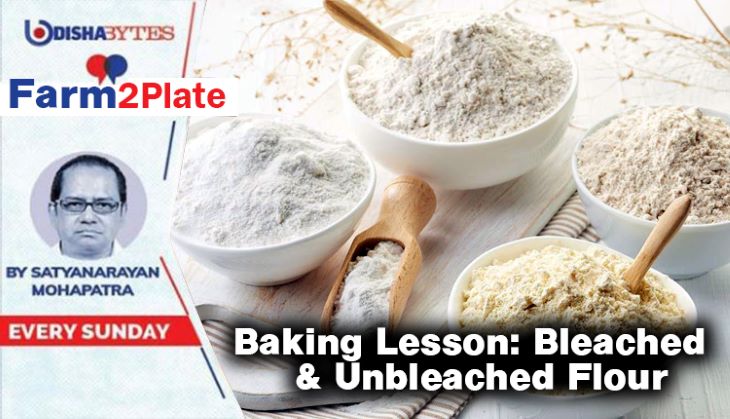Baking Lesson: Bleached & Unbleached Flour

Many of us have graduated from being a home baker to a professional baker.

Pre-migration period makes us dependent on the flour which we are comfortable with. It goes without saying that we depend on all-purpose flour.
It’s a versatile ingredient that can be used for making cakes, cookies, breads, and more. But very few are aware that there are two types of all-purpose flour – Bleached and Unbleached.
It is important that we understand the difference to know which one to use for specific recipes.
Bleached flour – It’s an all-purpose flour that is treated with chemical agents like chlorine dioxide, benzoyl peroxide, or potassium bromate, to speed up the ageing process. This makes the flour whiter, finer and softer, and also alters its flavour, texture and nutritional value.
Unbleached flour – This is an all-purpose flour that’s not been treated with any chemicals, and ages naturally after milling. This process takes longer than bleached flour, and results in a slightly off-white or yellowish colour, a denser and tougher texture, with a more wheaty flavour.
Benefits of bleached flour
* It has a lighter colour and a finer texture, which can make your baked goods look more appealing and tender.
* It has a milder flavour, which can let other ingredients shine through the recipes.
* It works well in recipes that require low protein content such as cakes, cookies, pancakes, waffles, and pie crusts.
Drawbacks of bleached flour
* It has a lower nutritional value than unbleached flour as some of the vitamins and minerals are lost or destroyed during the bleaching process.
* It may have a slightly bitter or chemical taste, especially if you have a sensitive palate or use a lot of it in your recipes.
* It may not be suitable for recipes that require a high protein content such as breads, pastries and pizza dough, as it may not develop enough gluten and structure.
Benefits of unbleached flour
* It has a higher nutritional value than bleached flour as it retains more of the natural vitamins and minerals from wheat kernel.
* It has a more natural and wheaty flavour, which can add depth and complexity to the baked goods.
* It works well for recipes that require a high protein content such as breads, pastries and pizza dough, as it can develop more gluten and structure.
Drawbacks of unbleached flour
* It has a darker colour and a coarser texture, which can make the baked goods less appealing and is more dense or chewy.
* Unbleached flour has a stronger flavour, which can overpower other ingredients in your recipes or clash with certain flavours.
* It may not be suitable for recipes that require low protein content such as cakes, cookies, pancakes, waffles, and pie crusts, as it may make them tough or dry. (That doesn’t mean one can’t use it for cakes)
Is bleached flour safe to eat?
Some people may be concerned about the safety of bleached flour, as it contains chemical additives that are not naturally present in flour. However, according to the regulatory bodies, bleaching agents used in flour are safe and approved for human consumption, and don’t pose any health risk when used in small amounts. They also regulate the amount and type of bleaching agents that can be used in flour, and require that they are clearly labelled on the packaging. However, many still prefer to avoid bleached flour for personal or ethical reasons like allergies, sensitivities, or environmental concerns. If one opts for unbleached flour, look out for organic or natural alternatives which don’t contain any bleaching agent.
The choice between bleached and unbleached flour depends largely on preferences, as well as the type of recipe one is going for.
* If one wants a lighter, softer and milder baked good, go for bleached flour.
* If one wants a darker, denser and wheaty baked good, go for unbleached flour.
* If one is baking a cake, cookie, pancake, waffle, or pie crust, bleached flour may work better.
* If one is baking bread, pastry, or pizza dough, unbleached flour may work better.
For the road
One can always use half bleached and half unbleached flour, and check how it turns out. Bleached and unbleached flour are two types of all-purpose flour that differ in their processing, characteristics and uses. Both have their benefits and drawbacks for baking, and the choice between them depends on one’s personal preference and type of recipe.

Comments are closed.